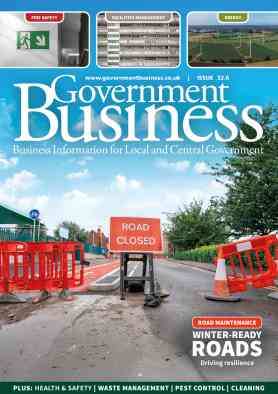
The future of street furniture
In parks, streets, and town centres, stainless steel street furniture is transforming urban environments. Kate Vale of the BSSA reveals how this material offers a perfect balance of beauty and durability
In the modern urban landscape, the presence of well-designed street furniture plays a vital role in enhancing the functionality, aesthetics, and overall quality of public spaces. Among the various materials used, stainless steel has emerged as a preferred choice for street furniture due to its strength, durability, and visual appeal. From benches and bollards to waste bins and signage, stainless steel street furniture contributes significantly to both the physical and social fabric of public areas. For local authorities, the use of stainless steel in public infrastructure represents not only a practical investment but also a commitment to sustainability, safety, and community well-being.
Stainless steel street furniture serves multiple purposes in public spaces. At its core, it provides practical solutions for everyday public needs. Benches offer seating for rest and social interaction; bins encourage cleanliness; bollards and railings help manage pedestrian and vehicular flow; and signage aids in navigation and information dissemination. These elements enhance the usability of parks, pavements, town centres, and transportation hubs, making them more accessible, orderly, and comfortable for all users.
Durability
One of the primary reasons for the widespread use of stainless steel in outdoor furniture is its exceptional durability. Stainless steel is highly resistant to corrosion, rust, and damage from environmental factors such as rain, snow, and UV exposure. Unlike other materials, it does not degrade easily over time, even with constant exposure to the elements. This resilience translates into low maintenance costs and a long lifespan, making stainless steel a cost-effective choice for local governments managing tight budgets and vast public areas.
Safety and accessibility are enhanced through the use of stainless steel street furniture. Many designs incorporate features that cater to diverse public needs, including armrests for the elderly, tactile paving for the visually impaired, and protective barriers that prevent accidents. Furthermore, stainless steel’s reflective properties can improve visibility in low-light conditions, contributing to a safer environment for pedestrians and motorists alike.
Aesthetics
From an aesthetic perspective, stainless steel offers a clean, modern appearance that complements a variety of architectural styles, from historical city centres to contemporary urban developments. Its sleek and neutral look allows it to blend seamlessly into different settings while still standing out as a mark of quality and care. This visual appeal is important for creating inviting public spaces that encourage community interaction.
Stainless steel street furniture not only offers durability and a sleek, modern aesthetic, but it also serves as a fantastic platform for integrating smart features like USB charging ports, wireless charging pads, solar-powered charging stations, Wi-Fi hotspots, LED lighting and environmental sensors. Embedding these features into public benches, bollards, lamp posts, or information kiosks elevates the urban experience.
For local authorities, the importance of stainless steel street furniture extends beyond immediate practicality. It represents an investment in long-term urban infrastructure. The durability and low maintenance needs reduce the frequency and cost of replacements, freeing up public funds for other essential services. In addition, stainless steel is 100 per cent recyclable, supporting environmental sustainability initiatives and helping councils meet green policy targets.
Moreover, stainless steel’s resistance to vandalism and tampering is particularly beneficial in urban areas where public property may be at risk. It can withstand impacts and is difficult to deface or damage, which helps maintain the cleanliness and integrity of public spaces. This in turn fosters a sense of safety and respect within the community.
Conclusion
In conclusion, stainless steel street furniture plays a multifaceted role in public spaces, contributing to functionality, safety, aesthetics, and sustainability. For local authorities, its use is not merely a matter of practicality but a strategic choice that reflects foresight in urban planning. By investing in high-quality stainless steel furniture, municipalities can create more liveable, attractive, and efficient public environments that serve current needs while preparing for future growth.


